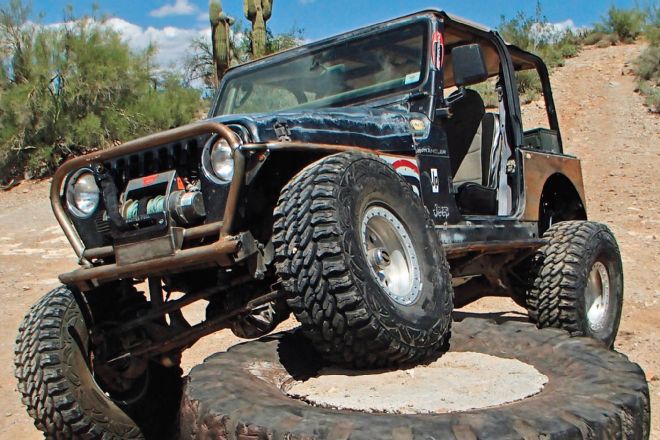
 Verne Simons
Senior Editor, Jp
Verne Simons
Senior Editor, Jp
Being able to road-drive an extreme 4x4 is what separates capable rigs from glorified side-by-sides. However, road-driving any very capable off-road rig with big, heavy, and durable tires can pose more than a few challenges. Tires chunk and wear oddly when used in extreme environments. Wheel weights can get knocked off on rocks. Tires can spin on wheels. All of these things can throw off past attempts at tire balancing. Running imbalanced tires that at speed on the road can be a real pain in the stinker, causing death wobble, tire hop, and general dangerous driving conditions. With a few tricks and a little work you, too, can get your tires to behave on-road like they’ve got a lick of sense. Here are a few tips and tricks we have tried when wheels and tires don’t cooperate with our on-road driving plans.
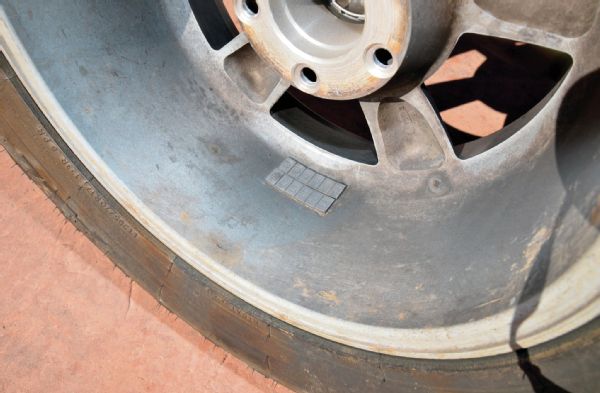
This style of stick-on weights is the best for balancing tires that get used off-road if you want your tires to stay balanced. But even with stick-on weights (or clip-on weights), tires can spin on the wheel, throwing the whole tire balance off and wasting time and money. We’ve also seen mud and sticks tear both styles of weight off the inside of wheels while off-roading (although some duct tape over stick-on weights may help retain them). Wheel weights that clip onto the wheel’s rim can move or get knocked off and are pretty useless to those of us who wheel on anything other than gravel.
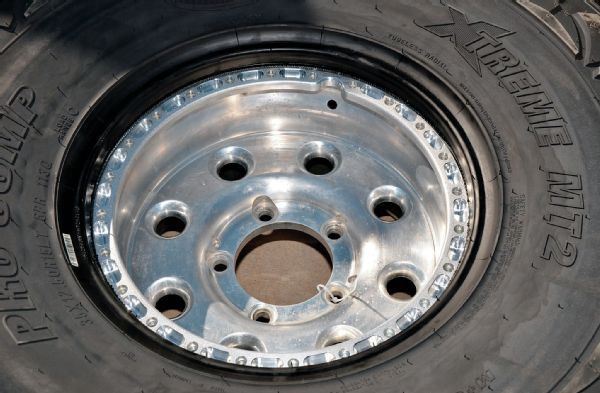
Tires mounted on beadlock wheels can be hard to balance but also have advantages. A lightweight wheel, like these forged Welds with beadlocks added by OMF, is easier to run balanced when combined with well-made newer tires. Once used and chunked, the tires can start hopping, wobbling, or shaking. Because these older Weld wheels are forged aluminum they are quite strong while being lightweight. Which makes them easier to balance. Also, the welded-on inner beadlock rings have been machined to maximize weight savings, and sometimes a beadlock ring can help protect a stick-on wheel weight from getting knocked off while the beadlock keeps the tire from spinning
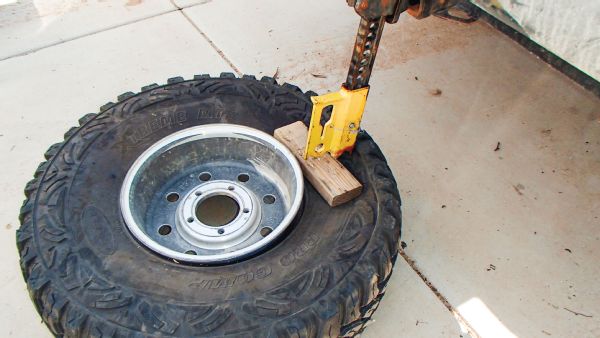
We’ve tried adding Air Soft BBs to out of balance tires with some success. By adding 101⁄2 ounces to each of the two front tires on our beater Jeep and running 35 psi on the road, our death wobble is better if not gone. You can find a chart online giving you a weight to add to each tire for starters. Some tires need more, some less. We’ve also heard of people using 00 buckshot, birdshot, sand, steel BBs, and even a little water to balance tires internally. To add any of the above, pull the valve core and break the inner bead with a piece of wood, truck with trailer hitch, and a Hi-Lift Jack as shown. Then pour in your balancing medium. Experiences and opinions on this method of tire balancing differ. A few commercial tire balancing beads are also available, such as Dyna Beads, which offer results with product support. The theory is that when a heavy spot in the tire rotates up as the tire spins, the tire bounces and the balancing media goes down. As this happens with a few revolutions, the media collects on the side of the tire opposite the heavy spot and counters the weight as the tire turns.
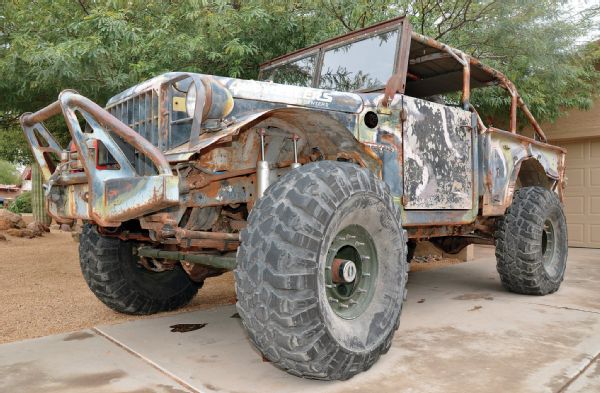
With these large tires running on bent and recentered H1 beadlocks, lower air pressure was the key to keeping the tires from shaking and bouncing this M37 to pieces. Yes, this rig gets driven on-road. Yes, it goes faster than the street sweeper. OK, not much faster. The top speed on this rig is 65, but what do you want from an old military truck turned crawler that can go almost anywhere (including taking the kids to school)? The larger the tire, the larger the tread lugs and the harder the tire is to get balanced. Likewise, the heavier the wheels, the harder things are to balance. This may be one case where bigger is not better.
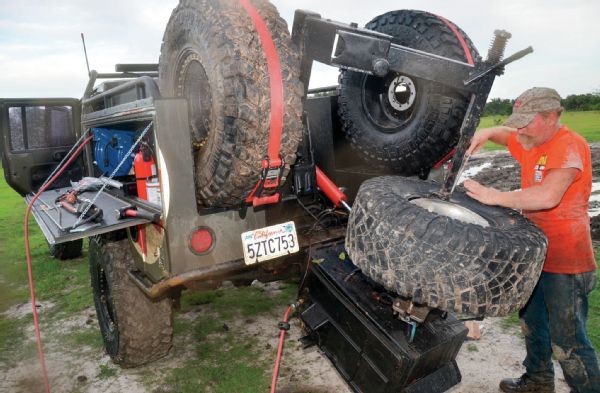
Wheeling in mud and water with low tire pressures can allow dirt, mud, or water to slip into your tires through the bead. When this happens your tire can be out of balance and may not hold air. Then you have to dismount the tire, clean the tire and bead surface, and remount the tire. Mud can also get caked on the inside of your wheels, wreaking balancing havoc. When this happens you need to find a pressure washer to hose the goop off the wheel.
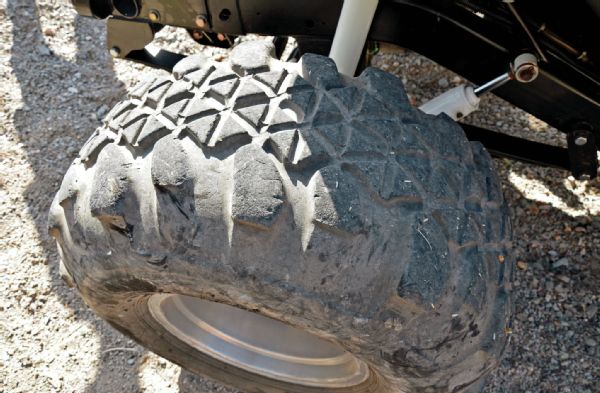
Bias-ply tires like the Super Swamper SX are longtime favorites with anyone who abuses his tires in heavy rock. These tires last forever (in the dirt) and grab with confidence where lesser tires get cut and go flat. That said, these tires can chunk and wear in ways that make balancing them next to impossible. Bias-plys also flat-spot when parked for more than a few years and will hop around until they get warm enough to round out. One solution for these issues is to keep your trailer ready to go at a moment’s notice. The alternative is to buy new sets of these tires long before the treads are close to being too worn out for off-road use. The good news, if you do this, is that you can sell the used tires for a decent price to someone who trailers his rig. With some of these tires, like the SXs shown here, the rubber is so thick that you can extend the tire’s off-road use with a grooving iron, but that does not help balancing issues.